List of National Parks of Canada
This is a list of National Parks of Canada. Canadian National Parks preserve both spectacular and representative areas of the country, located in every one of the nation's 13 provinces and territories. The goal of the national park service is to create a system of protected areas which represent all the distinct natural regions of the country.[1] Parks Canada – the governing and administration body for the system – has developed a plan identifying 39 different regions it aims to represent. In 2005, Parks Canada reported that the system was more than 60% complete. Canada's parks are managed primarily to protect the ecological integrity of the park, and secondarily to allow the public to explore, learn about and enjoy Canada's natural spaces.[1] Feasibility studies are currently underway for establishing further national parks in several areas.[2]
As of 2017, there are 39 National Parks and eight National Park Reserves (Kluane is the name for two areas–a national park and an adjacent proposed national park (a National Park Reserve)). National Park Reserves are areas intended to become national parks pending settlement of native land claims. Until then, they are managed under the National Parks Act as quasi-parks, but are included here in the main list.[3] This page also includes the country's three National Marine Conservation Areas (NMCAs), a single NMCA Reserve, the lone National Landmark, and proposed parks. National parks currently cover an area of 303,571 km², or about 3.0% of the total land area of Canada. Rounding out the national park system is a collection of National Historic Sites, listed separately.
National Parks and National Park Reserves
National Park Reserves are indicated by "(Reserve)" after the park name.
| Name | Photo | Location | Area | Established | Upload |
|---|---|---|---|---|---|
| Akami-Uapishku-KakKasuak-Mealy Mountains (Reserve) | Newfoundland and Labrador | 10,700 km2 (4,131 sq mi) | 2015 | | |
| Aulavik | Northwest Territories | 12,200 km2 (4,710 sq mi) | 1992 | | |
| Auyuittuq |  |
Nunavut | 19,089 km2 (7,370 sq mi) | 2001 | |
| Banff |  |
Alberta | 6,641 km2 (2,564 sq mi) | 1885 | |
| Bruce Peninsula |  |
Ontario | 154 km2 (59 sq mi) | 1987 | |
| Cape Breton Highlands | 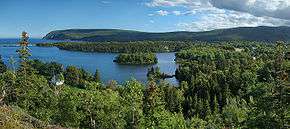 |
Nova Scotia | 949 km2 (366 sq mi) | 1936 | |
| Elk Island |  |
Alberta | 194 km2 (75 sq mi) | 1913 | |
| Forillon | 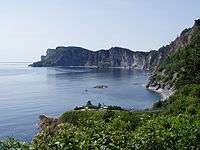 |
Quebec | 244 km2 (94 sq mi) | 1970 | |
| Fundy | 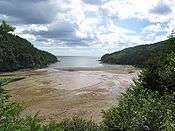 |
New Brunswick | 206 km2 (80 sq mi) | 1948 | |
| Georgian Bay Islands | 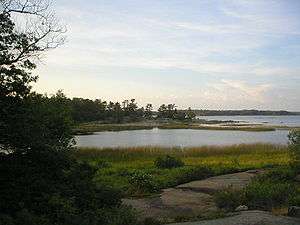 |
Ontario | 14 km2 (5 sq mi) | 1929 | |
| Glacier | |
British Columbia | 1,349 km2 (521 sq mi) | 1886 | |
| Grasslands | |
Saskatchewan | 907 km2 (350 sq mi) | 1981 | |
| Gros Morne | 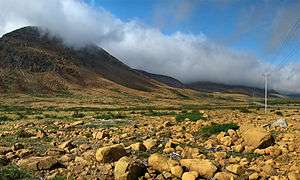 |
Newfoundland and Labrador | 1,805 km2 (697 sq mi) | 1973 | |
| Gulf Islands (Reserve) |
 |
British Columbia | 36 km2 (14 sq mi) | 2003 | |
| Gwaii Haanas[A] (Reserve) |
 |
British Columbia | 1,495 km2 (577 sq mi) | 1988 | |
| Ivvavik[B] | 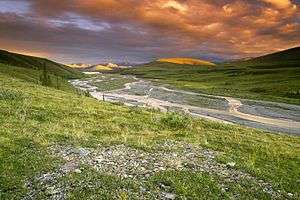 |
Yukon | 10,168 km2 (3,926 sq mi) | 1984 | |
| Jasper |  |
Alberta | 10,878 km2 (4,200 sq mi) | 1907 | |
| Kejimkujik |  |
Nova Scotia | 404 km2 (156 sq mi) | 1968 | |
| Kluane[C] (two units: a Park and a Reserve) |
 |
Yukon | 22,013 km2 (8,499 sq mi) | 1976 (Reserve) May 29, 1993 (Park) |
|
| Kootenay | 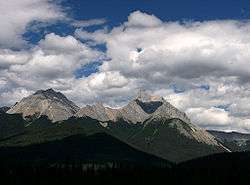 |
British Columbia | 1,406 km2 (543 sq mi) | 1920 | |
| Kouchibouguac | |
New Brunswick | 239 km2 (92 sq mi) | 1969 | |
| La Mauricie |  |
Quebec | 536 km2 (207 sq mi) | 1970 | |
| Mingan Archipelago (Reserve) |
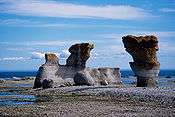 |
Quebec | 151 km2 (58 sq mi) | 1984 | |
| Mount Revelstoke |  |
British Columbia | 260 km2 (100 sq mi) | 1914 | |
| Nááts'ihch'oh[4] (Reserve) |
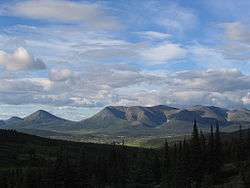 |
Northwest Territories | 4,850 km2 (1,873 sq mi) | 2014 | |
| Nahanni (Reserve) |
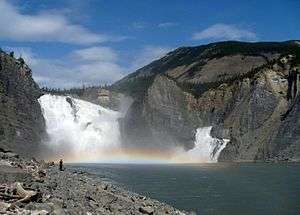 |
Northwest Territories | 30,000 km2 (11,583 sq mi) | 1976 | |
| Pacific Rim (Reserve) |
 |
British Columbia | 511 km2 (197 sq mi) | 1970 | |
| Point Pelee |  |
Ontario | 15 km2 (6 sq mi) | 1918 | |
| Prince Albert |  |
Saskatchewan | 3,874 km2 (1,496 sq mi) | 1927 | |
| Prince Edward Island | 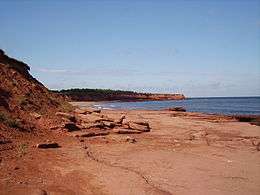 |
Prince Edward Island | 22 km2 (8 sq mi) | 1937 | |
| Pukaskwa | 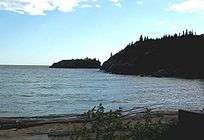 |
Ontario | 1,878 km2 (725 sq mi) | 1978 | |
| Qausuittuq |  |
Nunavut | 11,000 km2 (4,247 sq mi) | 2015 | |
| Quttinirpaaq[E] |  |
Nunavut | 37,775 km2 (14,585 sq mi) | 2001 | |
| Riding Mountain[F] | |
Manitoba | 2,973 km2 (1,148 sq mi) | 1933 | |
| Rouge Park | 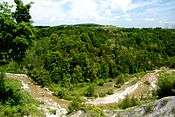 |
Ontario | 36 km2 (14 sq mi) | 2015 | |
| Sable Island (Reserve) |
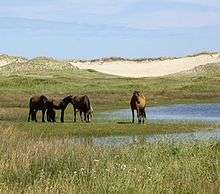 |
Nova Scotia | 34 km2 (13 sq mi) | 2013 | |
| Sirmilik |  |
Nunavut | 22,200 km2 (8,571 sq mi) | 2001 | |
| Terra Nova | 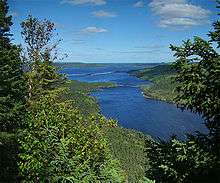 |
Newfoundland and Labrador | 400 km2 (154 sq mi) | 1957 | |
| Thousand Islands | |
Ontario | 24 km2 (9 sq mi) | 1904 | |
| Torngat Mountains | |
Newfoundland and Labrador | 9,700 km2 (3,745 sq mi) | 2008 | |
| Tuktut Nogait |  |
Northwest Territories | 16,340 km2 (6,309 sq mi) | 1996 | |
| Ukkusiksalik | 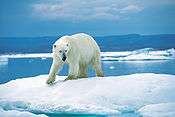 |
Nunavut | 20,885 km2 (8,064 sq mi) | 2003 | |
| Vuntut |  |
Yukon | 4,345 km2 (1,678 sq mi) | 1995 | |
| Wapusk | 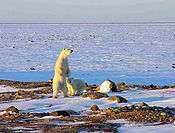 |
Manitoba | 11,475 km2 (4,431 sq mi) | 1996 | |
| Waterton Lakes[G] | |
Alberta | 505 km2 (195 sq mi) | 1895 | |
| Wood Buffalo | 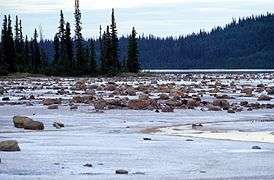 |
Alberta Northwest Territories |
44,807 km2 (17,300 sq mi) | 1922 | |
| Yoho | 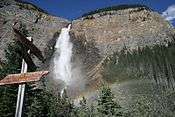 |
British Columbia | 1,313 km2 (507 sq mi) | 1886 | |
Proposed National Parks and National Park Reserves
All National Park Reserves listed above are, by definition, proposed national parks, to be added to the park system upon settlement of Native land claims. In the interim, they are administered under the National Parks Act. In addition, the places in the table below are proposed parks or National Park Reserves.
| Name | Location | Area |
|---|---|---|
| Thaidene Nene (Reserve)[5] | Northwest Territories | Approx. 14,000 km2 (5,405 sq mi)[6] |
Abolished National Parks
| Name | Location | Established | Abolished |
|---|---|---|---|
| Brereton Lake[7] | Manitoba | 1922 | 1930 |
| Buffalo National Park[8] | Alberta | 1909 | 1947 |
| Menissawok National Park[9] | Saskatchewan | 1922 | May 30, 1930 |
| Nemiskam National Park[8] | Alberta | 1914 | 1947 |
| Vidal's Point Park [10] | Saskatchewan | October 31, 1921 | May 30, 1930 |
| Wawaskesy National Park[11] | Alberta | 1922 | 1938 |
National Marine Conservation Areas
National Marine Conservation Areas (NMCAs) are a relatively new invention in the park system. Lake Superior National Marine Conservation Area, created in 2015, is the only unit that uses this designation in its name. Fathom Five National Marine Park was created in 1987, prior to the NMCA concept, and subsequently classified as an NMCA without changing its legal name. The case of Saguenay-St. Lawrence Marine Park is similar, while Gwaii Haanas is an NMCA Reserve, with the intention of becoming an NMCA.
These areas have or will have a different mandate than their terrestrial counterparts. They are designed for sustainable use, although they usually also contain areas designed to protect ecological integrity.[12] The government has announced plans to add five marine parks to the system as part of the Marine Conservation Areas Act. The first to be announced was Lake Superior in 2007; it was officially established in 2015. Other areas under negotiation are the southern Strait of Georgia and Gwaii Haanas in British Columbia, and there are discussions to study the feasibility of an area on the southern coast of Newfoundland.[13]
| Name | Photo | Location | Area | Established | Upload |
|---|---|---|---|---|---|
| Fathom Five | |
Ontario | 112 km2 (43 sq mi) | 1987 | |
| Gwaii Haanas (Reserve) | British Columbia | 1,500 km2 (579 sq mi)[14] | 2010 | | |
| Lake Superior | |
Ontario | 10,000 km2 (3,861 sq mi)[15] | 2015 | |
| Saguenay-St. Lawrence | |
Quebec | 1,246 km2 (481 sq mi)[16] | 1998 | |
Proposed National Marine Conservation Areas
As a National Marine Conservation Area Reserve, Gwaii Haanas, listed above, is, by definition, a proposed NMCA, to be added to the park system upon settlement of Native land/water claims. In the interim, it is administered under park rules. In addition, the places in the table below are proposed NMCAs or NMCA Reserves.
| Name | Location | Area |
|---|---|---|
| Lancaster Sound | Nunavut | 40,000 km2 (15,444 sq mi)[17] |
| Magdalen Islands | Quebec | 16,500 km2 (6,371 sq mi)[18] |
| Southern Strait of Georgia (Reserve) | British Columbia | 1,400 km2 (541 sq mi)[19] |
National Landmark
In addition to national parks, a National Landmarks program was established in 1978 but has not yet been expanded beyond a single property. Landmarks were intended to protect specific natural features considered "outstanding, exceptional, unique, or rare to this country. These natural features would typically be isolated entities and of scientific interest."[20]
| Name | Photo | Location | Area | Established |
|---|---|---|---|---|
| Pingo |  |
Northwest Territories | 16 km2 (6 sq mi) | 1984 |
See also
Provincial parks are administered and funded by the provincial governments, however some provincial parks are categorized as national parks (Category II) under the IUCN's Protected Area Management Categories.
Gatineau Park in Quebec is another park under the jurisdiction of the federal government. However, it is managed by the National Capital Commission, not Parks Canada, and is not considered part of the national parks system.
- List of Canadian protected areas
- List of UNESCO Biosphere Reserves in Canada
- List of national historic sites of Canada.
Notes
- ^ A. South Moresby National Park Reserve was created July 12, 1988, with the signing of the South Moresby Agreement; renamed Gwaii Haanas National Park Reserve and Haida Heritage Site on February 28, 1996. Includes SGaang Gwaii (Anthony Island) World Heritage Site.[21]
- ^ B. Established as Northern Yukon National Park in 1984, renamed Ivvavik National Park in 1992.[22]
- ^ C. Kluane National Park Reserve was set aside in 1976, following the Kluane Game Reserve of the early 1940s. Subsequently, an eastern portion of the Reserve became Kluane National Park in 1993.
- ^ D. In 2007, the government announced that 29,000 km2 (11,197 sq mi) of land would be added to Nahanni, making it 33,766 km2 (13,037 sq mi). However, these changes have not been fully implemented yet.[23]
- ^ E. Ellesmere Island National Park Reserve was established in 1988, renamed Quttinirpaaq in 1999 and became a national park in 2000.[24]
- ^ F. Riding Mountain National Park was designated a UNESCO Biosphere Reserve in 1986.[25]
- ^ G. Glacier National Park is part of Waterton-Glacier International Peace Park, a World Heritage Site.
References
- General
- "National Parks of Canada". Parks Canada. Retrieved 2008-04-07.
- "National Marine Conservation Areas of Canada". Parks Canada. Retrieved 2008-04-07.
- "Canada's National Parks and National Park Reserves". The Canadian Encyclopedia. Retrieved 2008-04-07.
- "Great Canadian Parks Index". Canadian Online Explorer. Archived from the original on 2008-04-19. Retrieved 2008-04-07.
- Specific
- 1 2 "National Parks of Canada - Introduction". Parks Canada. Retrieved 2008-04-07.
- ↑ "National Parks of Canada - Creating New National Parks of Canada". Parks Canada. Retrieved 2008-04-07.
- ↑ "Backgrounder - Working toward the creation of Nááts’ihch’oh National Park Reserve". Parks Canada. 2008-04-07. Retrieved 2008-04-07.
- ↑ "Canada getting new national park in Northwest Territories". Canadian Press. 2008-04-07. Retrieved 2008-04-07.
- ↑ "Ottawa, Dene agree to create vast national park". CBC News. 2006-10-14. Retrieved 2008-04-07.
- ↑ "Nature Canada Applauds Federal Government’s Renewed Commitment to National Park System". Nature Canada. 2006-10-16. Retrieved 2008-04-07.
- ↑ Hart, E.J. "J.B. Harkin: Father of Canada's National Parks", The University of Alberta Press, Edmonton, AB, 2010, p. 340.
- 1 2 Federation of Alberta Naturalists, Fish and Wildlife Historical Society (2005). Fish, Fur & Feathers: Fish and Wildlife Conservation in Alberta 1905-2005. Nature books of Alberta. p. 100. ISBN 0-9696134-7-4.
- ↑ "Significant events in the history of Parks Canada". Canadian Geographic. Archived from the original on 2012-03-16. Retrieved 2011-05-03.
- ↑ National Parks Administration (1885 to 1973), Chapter 4 in A History of Canada's National Parks Volume II, by W.F. Lothian, Parks Canada, 1976-1987
- ↑ "Project Update: Arthropods of Canadian Grasslands". University of Alberta. Retrieved 2008-04-07.
- ↑ "National Marine Conservation Areas of Canada". Parks Canada. Retrieved 2008-04-07.
- ↑ Ditchburn, Jennifer (2007-10-24). "PM expected to unveil marine conservation area". Toronto Star. Retrieved 2008-04-07.
- ↑ "Minister visits, celebrates marine park's creation". The Queen Charlotte Islands Observer. 2010-06-14. Archived from the original on 2011-07-15.
- ↑ "Harper announces creation of protected marine park". CBC News. 2007-10-25. Retrieved 2008-04-07.
- ↑ "Registre des aires protégées du Québec" (PDF). Ministère du Développement durable, de l'Environnement et des Parcs du Québec. Archived from the original (PDF) on 2009-02-25. Retrieved 2008-04-27.
- ↑ Proposed Lancaster Sound National Marine Conservation Area, Parks Canada, 2011
- ↑ Study on the Creation of a Marine Protected Area in Îles-de-la-Madeleine, Parks Canada, 2012
- ↑ Feasibility Study for the Proposed Southern Strait of Georgia National Marine Conservation Area Reserve, Parks Canada, 2012
- ↑ "Pingo Canadian Landmark - Park Management". Parks Canada. Retrieved 2008-04-07.
- ↑ "Gwaii Haanas National Park Reserve and Haida Heritage Site". The Canadian Encyclopedia. Retrieved 2008-04-07.
- ↑ "Ivvavik National Park". The Canadian Encyclopedia. Retrieved 2008-04-07.
- ↑ "Tories' expansion of Nahanni park praised". CTV Television Network. 2007-08-08. Retrieved 2008-04-07.
- ↑ "Quttinirpaaq National Park". The Canadian Encyclopedia. Retrieved 2008-04-07.
- ↑ "Biosphere Reserve Information - Canada - Riding Mountain". UNESCO. Retrieved 2008-04-07.
External links
| Wikimedia Commons has media related to National Parks of Canada. |
- Parks Canada
- World Heritage Sites in Canada
- Park Search Canadian Parks Locator
- Parks Canada Directory
